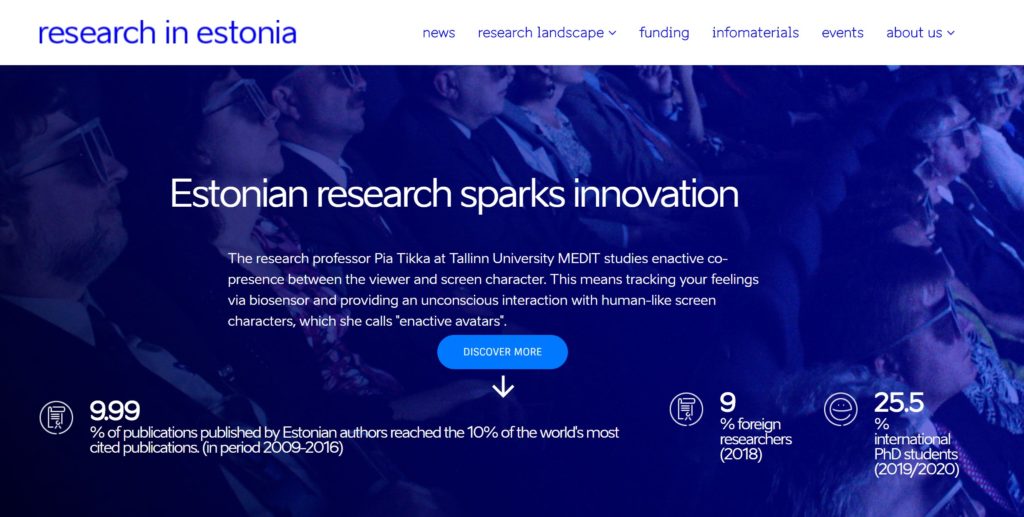How can a country of only 1.3 million people promote its research internationally? In Estonia there is a service dedicated to the international promotion of research, and its director told me in an interview that it was essential for universities to be given national support and resources. I think Romania can apply this model, not only to promote its research internationally, but even nationally.
Research in Estonia is a portal that publishes news about the research results in Estonia. At a conceptual level it seems simple, but behind it lies a strategy to increase the visibility of research among the international audience. Project coordinator, Siim Lepik, argues that an initial assessment of the results of this initiative shows that Estonia has gained visibility in the international press and have a comparable to that of much larger countries. It is interesting that this service is fully supported by European funds: the European Development Fund, through the Mobilitas Plus programme, until the end of 2022.
Research in Estonia leads the international marketing of Estonian research, aiming to promote Estonia as a scientifically attractive country, to ensure that information about Estonian research is up-to-date and available to international fellows, and to use success stories to create visibility and bridges between different interest groups - researchers, companies, etc.
"It was an idea of Estonian Research Council [under the coordination of the Ministry of Education and Research, equivalent to UEFISCDI - n.m.]," explains project manager Siim Lepik. "But I have to say that it is part of Estonia's national brand, along with Visit Estonia, Work in Estonia, which are managed by other institutions, but have the same visual language."

One of the advantages of this service is that it offers them support in communicating science to universities and research institutions. "Not all institutions have these resources; or maybe science communication staff have to share the work between promoting science nationally, internationally, and other promotional activities of the organisation."
The service finds topics relevant to international audiences through several sources. "Sometimes we find something interesting and then we talk to a journalist hired by us to write an article about it. Other times we get articles already written by people from the university and they fit on the RiE website. We also have a good collaboration with the science journalism portal Novaator (belongs to the national press trust) and sometimes we choose Estonian language articles published on their portal and translate them into English for our website," Siim Lepik explained.
We organise science communication training sessions
But Research in Estonia is not just about publishing articles, but offers more tools to support universities and research institutions. "We organise science communication training for various groups, take part in international fairs and organise visits for journalists."
Another facility is that universities can transmit, through press releases to Eureka Alert, the world's largest English-language science news service. The individual subscription of the an institution for this service would be just under 1500 euros per year per user.
I also read their Marketing strategy and I believe that in Romania a similar service would be essential, both with the ambition to promote research internationally and (more especially) at national level.
With minor exceptions, institutions and universities in Romania do not have sufficient resources nor enough staff to be able to provide the public with news from the results of scientific research. As long as there are no communication programmes science (please write to me if there is one I don't know about), nor are there enough people who could be employed by the offices of communication offices specifically to bring scientific results to light.
Until science communication culture takes shape in Romania, a small team in a central institution, similar to the one in Estonia, could support universities with:
- identifying research results that could be presented to the public
- presenting the results in formats attractive to the general public (press releases, videos, infographics etc.)
- providing training for communicators who are interested in the field and researchers who want to learn to speak in the language of non-specialist audiences
According to strategyResearch in Estonia does not communicate for the sake of communication, but through visibility they seek prestigious collaborations, to recruit PhD students internationally and bring money to their smart specialties. All this and much more is also needed in Romania.





